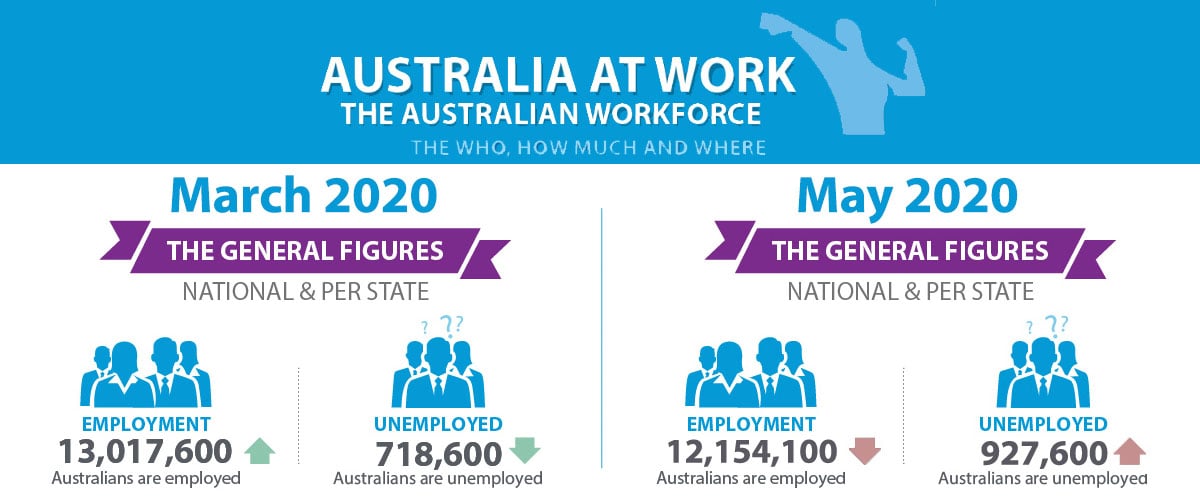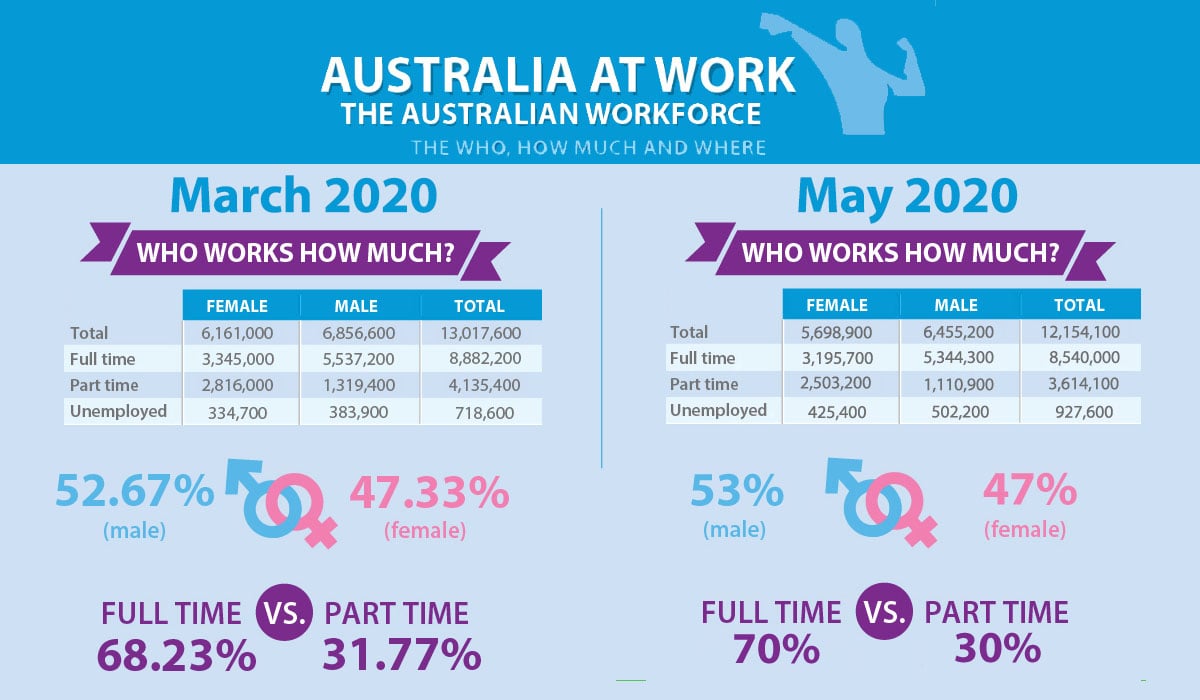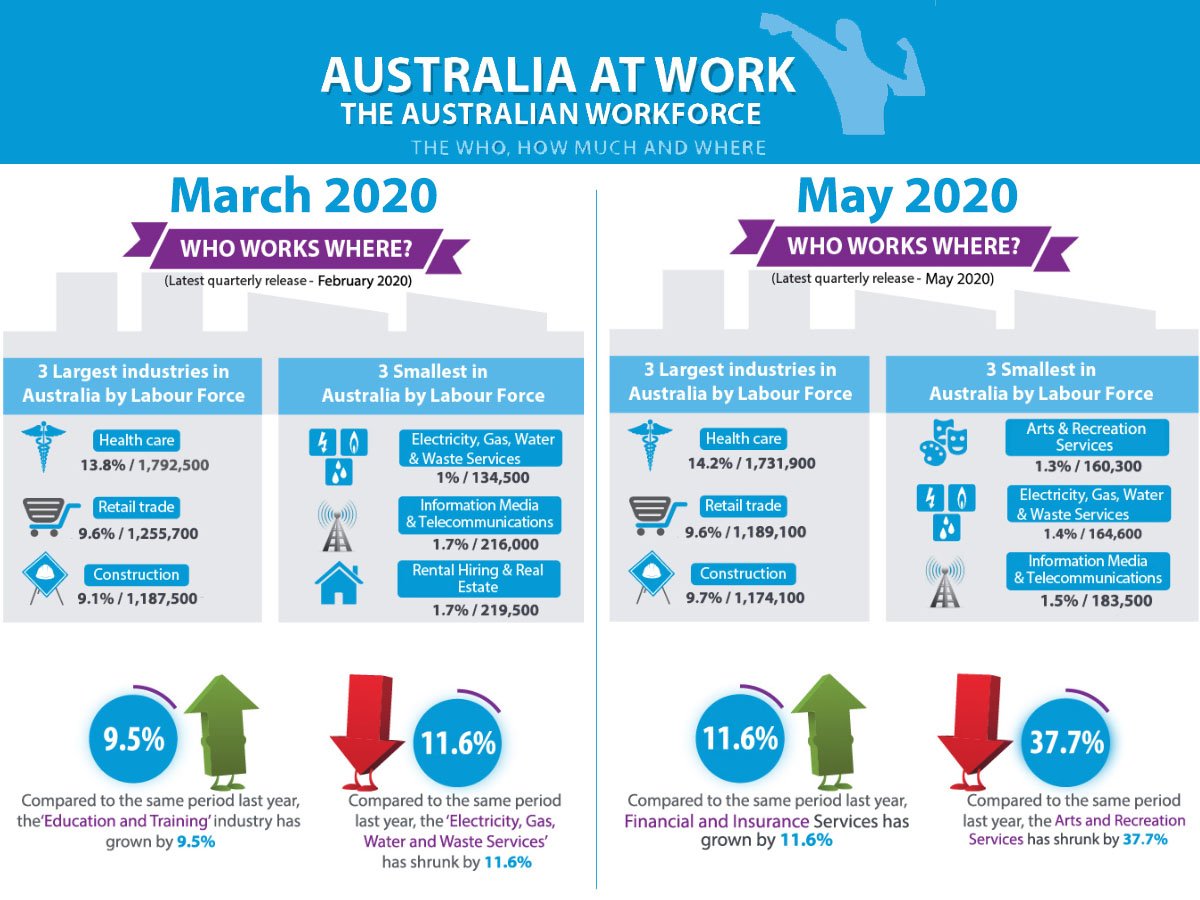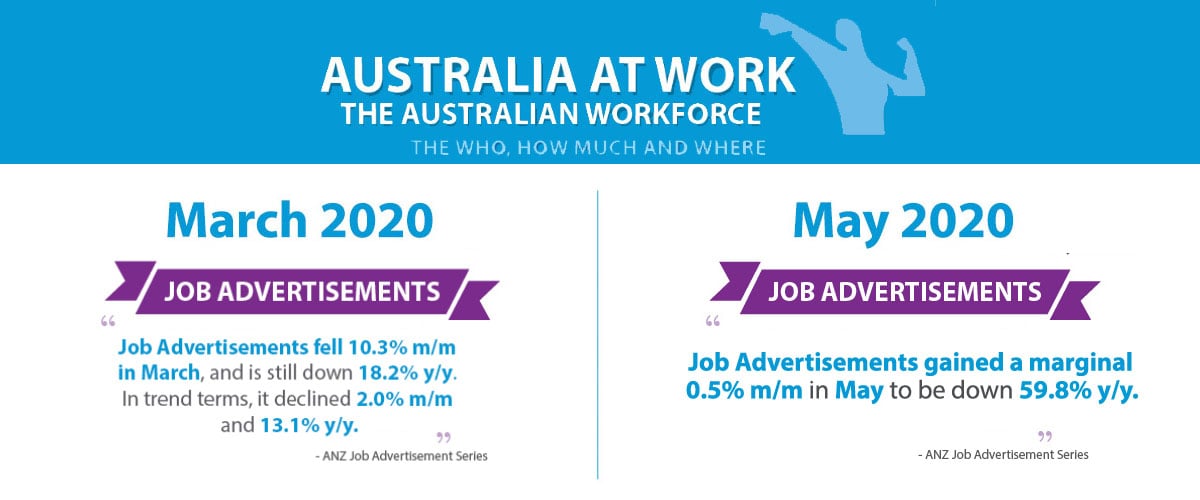Every month for a number of years, we have produced an infographic that tells a story of the Australian workforce. It is broad-based and the data has been relatively stable for a long time. . However, it does reveal that senior executives in jobs now and those who will be placed as a consequence of executive search projects, will need to interact very differently with the labour market to drive their organisations' Adapt and Thrive strategies.
The raw numbers are bad enough and we know they are likely to get worse, particularly if the raft of government support measures are watered-down in September and October.

The basic unemployment rate at 5.2% in March, rising to 7.1% in May is bad enough but only tells part of the story. The participation rate had remained steady for some time at around 66% up until March. However, while the number of unemployed showed an increase of 209,000 people, there are actually 863,500 people fewer who were employed. Unemployment has gone up, but in relative terms the participation rate has fallen off a cliff.
the challenge that this will represent to business leaders over the next 12 to 36 months will not only be in finding skilled people but in finding ways to release top talent from the trauma of recent changes.

Part-time work seems to have suffered more than full-time work, but Jobkeeper may well be keeping more full-time employees in the job market artificially. Of course, we can look at the history of the Australian economy and hope that businesses are resilient and finding ways to adapt to the change and disruption that came with a vengeance just 16 weeks ago.

Perhaps artificially, the 3 largest industries in Australia by labour force, which are Healthcare, Retail and Construction have retained their top 3 positions. However, Arts and Recreation Services, the energy industries and IT and T have very quickly become the 3 smallest industries in Australia by labour force statistics.

In terms of prospective recoveries, job advertisements were hit very hard, very early as organisations effectively withdrew their hiring intentions. In May, however there was a marginal increase in the number of job advertisements over April and we understand that this trend has continued in June. However job ads are down almost 60% on a year ago.
In terms of the executive search roles we have been working on recently which cover oil and gas, renewable energy, fresh food production and financial services we are starting to look with our executive search clients even harder at some of the soft skills. Adaptability and propensity for change along with resilience and effective communication skills were always important but they are paramount now. Leaders are working from home as are their teams, they are helping their teams navigate fear, uncertainty and distraction and are seeking ever-increasing contribution to new ideas for change, opportunities to pivot to and transformational insights.
What we have been impressed by is the range of change and innovation we have seen among leaders we have placed, worked with on professional development or have worked with their teams. In many cases they have navigated particularly challenging hits to their businesses, have survived, are working hard to adapt in order that they may thrive in the future.
Among our executive search and business advisory cohort we have also seen much higher levels of “value consciousness” with many examples of providing development and support tools and services free of charge just to help people move through these challenging times.
It is this level of commitment to change that we believe will see our economy and our workforce emerge from this crisis with more holistic leadership values and significantly enhanced people skills, ironically gained at a time when we are often speaking with each other via a computer.
We will produce more commentary on this data in two months time but you will also be able to update yourself with downloadable copies across social media of the June information which we will publish towards the end of July.






.png?width=208&height=97&name=SpFx_Affiliate_logo_large-1%20(2).png)